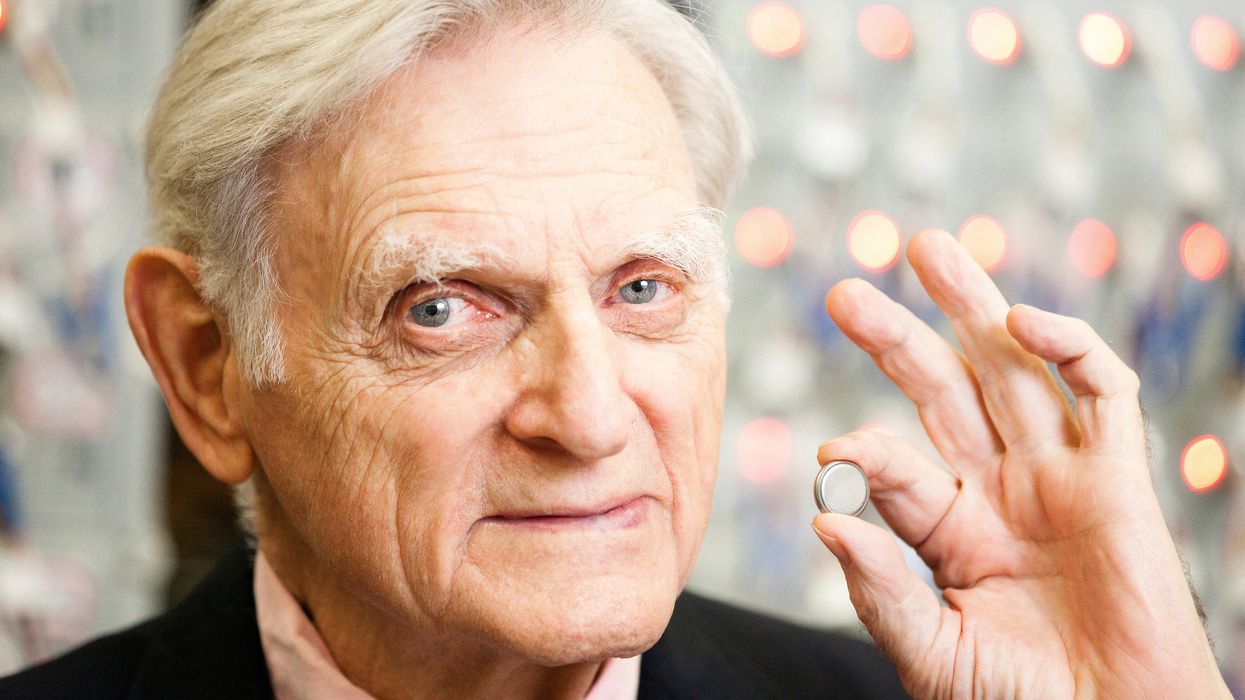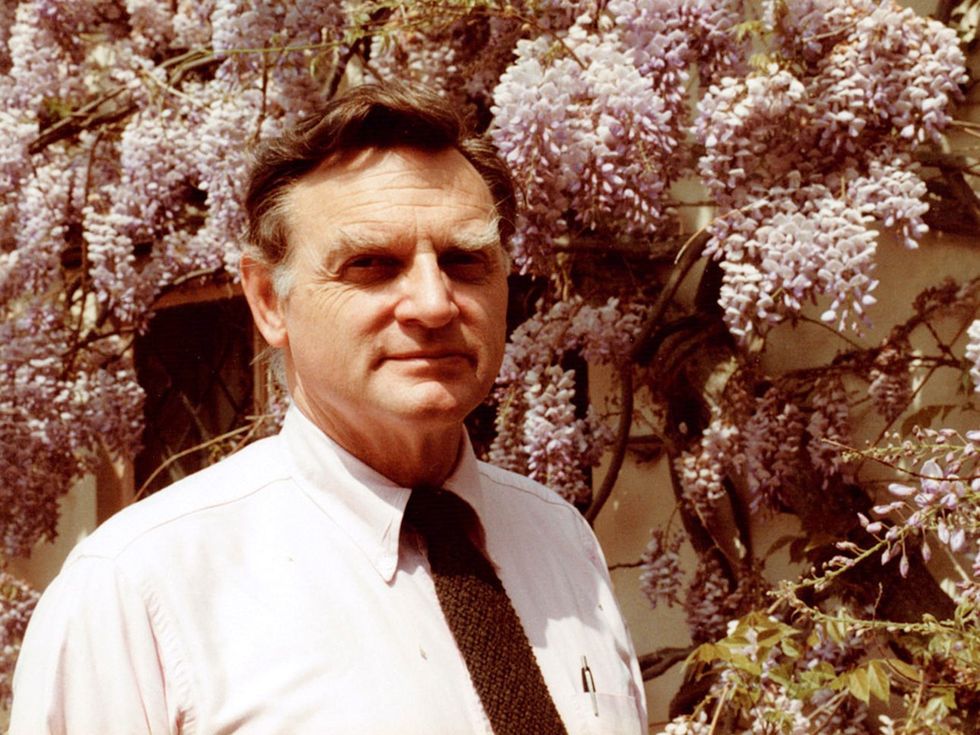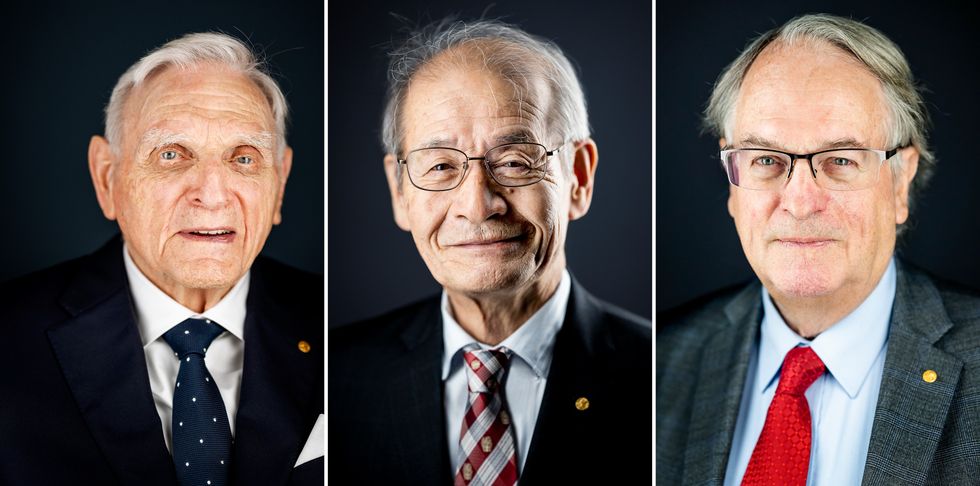Remembering Lithium-Ion Battery Pioneer John Goodenough

Nobel Laureate John B. Goodenough, one of the inventors of the lithium-ion battery, died on 25 June at age 100.
Goodenough, a professor of electrical and computer engineering at the University of Texas at Austin, authored more than 800 technical papers during his career. He and his colleagues were recently granted a U.S. patent, shortly before his 100th birthday.
A mathematician and physicist by education, Goodenough had a 70-year career in physics and chemistry. He probably is best known for developing the lithium cobalt oxide cathode in 1980-which became the foundation for Sony's first commercial lithium-ion battery in 1991.
For that, he won a 2019 Nobel Prize in Chemistry, sharing the award with M. Stanley Whittingham, who created the lithium-ion concept, and Akira Yoshino, who developed the anode chemistry that was used in Sony's first lithium-ion battery.
Goodenough was awarded the 2012 IEEE Medal for Environmental and Safety Technologies for discoveries that paved the way for development of the rechargeable lithium-ion battery technology."
Starting in the 1990s, his lithium cobalt oxide cathode was used in many electronic products including camcorders, laptop computers, and mobile phones. It later became the chemistry of choice for early electric cars including the 2008 Tesla Roadster.
Within the battery community, Goodenough is known for more than just lithium cobalt oxide, though. He helped develop three of the five most commonly used types of lithium-ion chemistries. His first was lithium cobalt oxide. His second, lithium manganese oxide, is used in power tools, medical devices, and some electric vehicles. His third, lithium iron phosphate, is now one of the most popular battery chemistries in the automotive industry.
Overcoming struggles with dyslexiaBorn in Jena, Germany, Goodenough grew up in Woodbridge, Conn., about 13 kilometers from Yale, where his father was a religion professor.
Goodenough was dyslexic and struggled to read-which almost caused him to be held back in the sixth grade.
I was so frustrated that I couldn't read," he wrote in his memoir, Witness to Grace. And, of course, my [older] brother read really well, and my father was a professor with a lot of books to read. It was terrible."
Goodenough taught himself to read and became a high-achieving student in high school. But even after gaining acceptance to Yale, he said, he steered clear of all courses with long reading lists, fearing that he wouldn't be able to keep up.
After graduating in 1943 with a bachelor's degree in mathematics, Goodenough joined the U.S. Army. He worked as a meteorologist and was tasked with predicting the weather for the Allies' D-Day invasion.
Following World War II, he pursued a doctorate in physics at the University of Chicago. He studied under Enrico Fermi, the physicist who created the world's first nuclear chain reaction, and Edward Teller, the so-called father of the hydrogen bomb." His doctoral supervisor was Clarence Zener, whose diode famously allowed current to flow in reverse.
After Goodenough earned a Ph.D. in 1952 in solid-state physics, he joined MIT's Lincoln Laboratory, in Lexington, Mass., as a researcher. He was part of a team there that developed the world's first random-access magnetic memory. His ability to cross disciplines started at MIT.
At Lincoln Lab, in order to solve problems, we had to bring physics and chemistry together with engineering," he said during an interview in 2016.
 Goodenough developed the lithium-ion battery while serving as the appointed head of Oxford's inorganic chemistry laboratory.The University of Texas at Austin
Goodenough developed the lithium-ion battery while serving as the appointed head of Oxford's inorganic chemistry laboratory.The University of Texas at Austin
In 1976 he moved to England to work at Oxford, where he was appointed head of its inorganic chemistry laboratory, despite little formal chemistry coursework. It was there that Goodenough made his mark while working on a rechargeable lithium battery with Koichi Mizushima, a postdoctoral researcher.
Exxon researcher Whittingham had developed a lithium titanium disulfide battery in the 1970s; Goodenough decided to replace the titanium disulfide with lithium cobalt oxide. It gave the battery a significant voltage boost: from 2.4 to 4 volts. The higher voltage made his new battery chemistry almost impossible to ignore.
Goodenough patented his battery in 1980, signing away his financial claim to it in order to fund the patent.
Sony produced its first commercial lithium-ion battery in 1991 using Goodenough's and Mizushima's cobalt oxide cathode. The company originally employed the battery in its Handycam, and the lithium-ion technology soon made its way into billions of mobile phones and laptop computers.
While still at Oxford in 1981, Goodenough worked with Michael M. Thackeray on a lithium manganese oxide battery. The LMO battery was less expensive and safer to use than lithium cobalt oxide, and it became a mainstay in tools and medical devices. In 2010 Nissan used it in its Leaf electric car.
Goodenough moved back to the United States in 1986 and joined the University of Texas at Austin as a professor of mechanical engineering. He worked on another lithium-ion chemistry there in 1995: lithium iron phosphate.
At first, he had little confidence in the chemistry, thinking it was too low in energy. But French battery scientist Michel Armand called Goodenough and offered to collaborate on it. The duo created a lithium-ion battery with lower voltage but also lower cost and greater safety.
Twenty-five years later, the battery is gaining momentum in the auto industry as a means of reducing the cost of electric cars. Today it is being employed by Chinese EV manufacturers including BYD, as well as by Ford, General Motors, and Tesla.
 Goodenough [left] shared the 2019 Nobel Prize in Chemistry with Akira Yoshino [middle] and M. Stanley Whittingham. Yoshino developed the anode chemistry that was used in Sony's first lithium-ion battery and Whittingham created the lithium-ion concept.Alexander Mahmoud/Nobel Media
Goodenough [left] shared the 2019 Nobel Prize in Chemistry with Akira Yoshino [middle] and M. Stanley Whittingham. Yoshino developed the anode chemistry that was used in Sony's first lithium-ion battery and Whittingham created the lithium-ion concept.Alexander Mahmoud/Nobel Media
During his 70-year career, Goodenough received numerous awards. In addition to the Nobel Prize, he received the 2011 U.S. National Medal of Science from President Barack Obama.
Goodenough's other honors included the Royal Society's 2019 Copley Medal, a 2014 Charles Stark Draper Prize from the National Academy of Engineering, the 2001 Japan Prize, the 2018 Benjamin Franklin Medal, and a 2009 Enrico Fermi Award.
He was a member of the National Academy of Engineering, the National Academy of Sciences, the French Academy of Sciences, and the National Academy of Sciences in India.